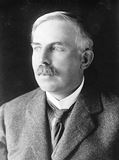Beta decay

In radioactive beta decay, a neutron turns into a proton or a proton into a neutron, with the atomic nucleus emitting an electron plus antineutrino and a positron plus neutrino, respectively. In this case, electron and positron are called beta particles (denoted by the Greek letters β- and β+) to indicate that they are formed inside the atomic nucleus.
History
The name was coined by the New Zealand physicist Ernest Rutherford (1871 - 1937) Baron of Nelson. By 1900, the French physicist Antoine Henri Becquerel (1852 - 1908) had already shown that the particles were electrons. In 1914, the English physicist James Chadwick (1891 - 1974) demonstrated the continuous energy distribution of these electrons.
Related concepts
Last modified:21 December 2025 1.36 p.m.
View this page in: Nederlands
